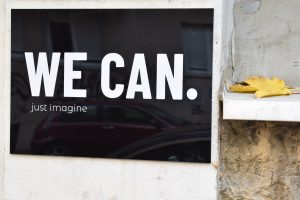4 Communities best nurture creativity

When two or more people are organized into a group of some kind, they become a community with the potential to support and nurture creativity. Classes of students can be developed into communities of learners if the members take the time to get to know each other, build an environment where it is safe to share ideas, ask questions and give each other honest and meaningful feedback. This kind of community can be very valuable to support significant learning but it can also be further developed to successfully support and nurture creativity. These communities also need to provide a safe place to support and encourage the taking of risks and supporting the failures that often come with developing innovations.
Communities that are diverse can support valuable creativity and innovation because of the diversity of ideas, backgrounds, values and life experiences that can be found in any diverse group of people. Here is a recent article by Gwen Morgan titled: “6 CREATIVITY HABITS FOR PEOPLE WHO THINK THEY’RE NOT CREATIVE” that describes 6 strategies for helping communities to help members develop their creative abilities.
Watch this short video about how Apple supports this.
Apple — Diversity — Inclusion inspires innovation https://youtu.be/qxKFDnzluOs
Communities that support creativity well are very valuable in any workplace because they will help people to develop and exercise their creative abilities to create value for the community. This typically leads to happier and more meaningful experiences, as well as the development of everyone’s individual creative abilities. In a business context, this can develop significant value for the organization.
Communities nurture creativity the best when they maintain an environment of trust that is positive and supportive to practicing the principles of creativity. This includes providing opportunities for sharing questions, ideas, and feedback about a wide array of things that may not even appear to be initially of value to the organization. These communities need to provide safety for taking risks and allowing for the failures that will take place from those risks. Creativity needs to be valued and celebrated by all members of the community.
Get to know the people you are working with. Be supportive to them and encourage them to be creative. This will reciprocate back to you in helpful ways.
The people that you interact with in your workplace can form a community. This could be formally called a “team”, “department” or “unit.” From my experience, the community of people you work with will either make your work enjoyable and satisfying or not. But it is up to you to participate in the building of the community to make it rewarding to you. Communities can be very dynamic and shift quickly under the influence of many factors. You need to actively contribute to the building of the community and the kind of work environment it will sustain, be it constructive or destructive.
Not all managers or leaders of workplaces believe that communities need to be developed or sustained. I remember choosing to disregard investing valuable class time in my courses to build a learning community. I would focus on learning my students’ names and just assumed they knew each other’s names. I have later learned the power of taking this time to help the students learn not just the names of their peers but also more about them so they can develop relationships of support and trust. This does take time, but it pays off over all with the benefits of more significant learning taking place. I also found that the same characteristics that help learning communities support significant learning are also the same that support creativity and innovation.
. . . . .
Watch this short clip from a presentation by Sir Ken Robinson.
What are your experiences with the people you have worked with? Did you feel that there was a sense of community present? Why or why not?
Would you have been more successful if you had a supportive community and environment to work in?
What could you have done to contribute to building a positive workplace community?
Do you feel it is a waste of time to participate in team or community building activities?
Challenge:
Engage in a community of people that have interests and values in common with you. Participate in this community to explore and practice the principles of this book.
Further Readings/Viewings
Creativity in the Workplace — Mission Impossible https://youtu.be/P_NJXHV1K88

